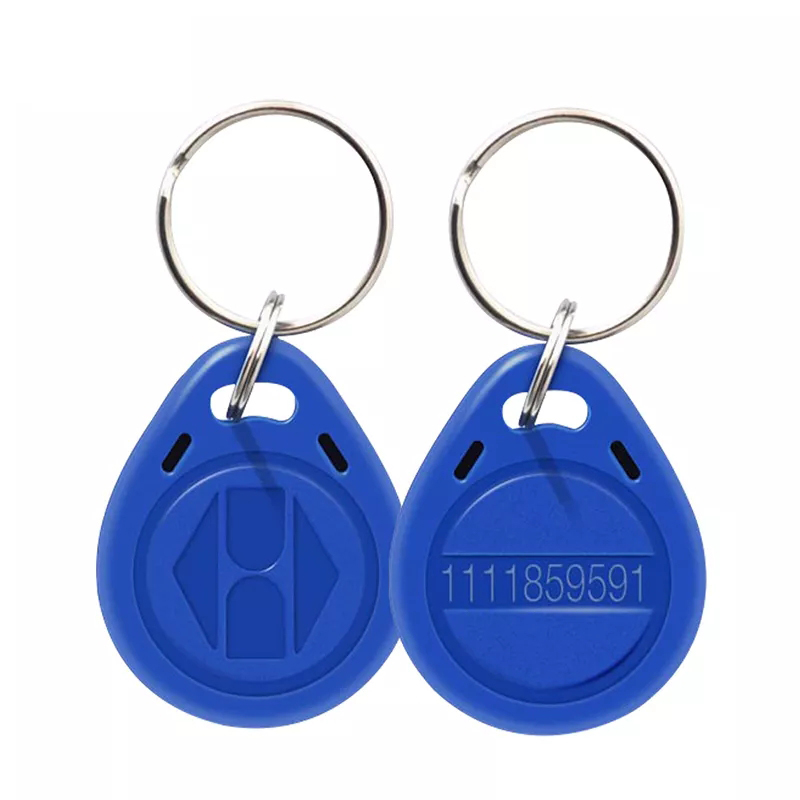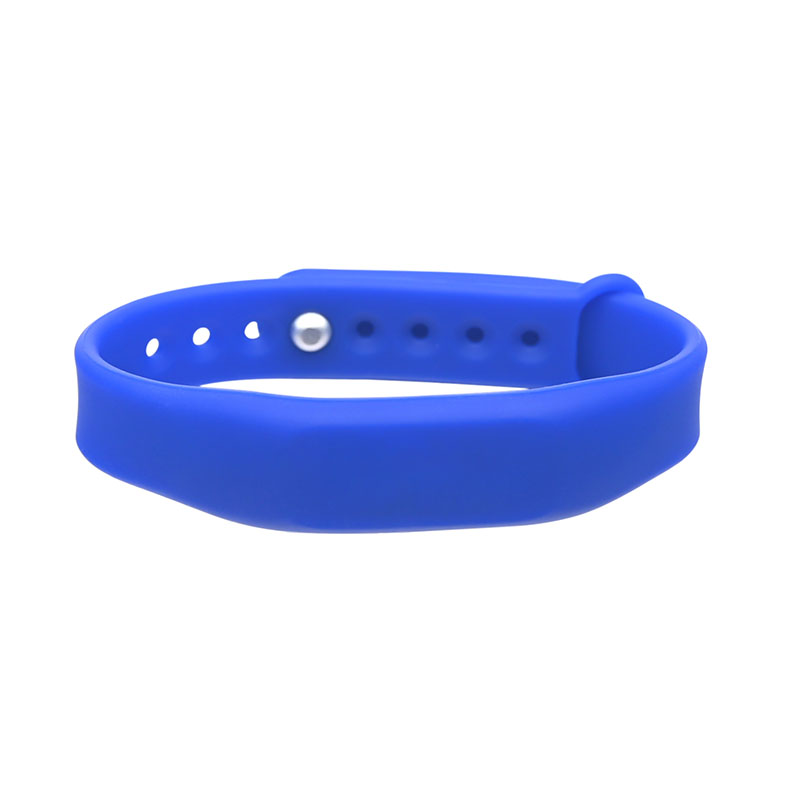
rfid wristbands have rapidly evolved into essential tools across multiple industries, offering unparalleled convenience, security, and efficiency. These smart wristbands are embedded with RFID (Radio Frequency Identification) tags that communicate wirelessly with readers, enabling a range of applications from event access to healthcare management. Thanks to their adaptability—available in various materials like silicone, fabric, or plastic, and operating at different frequencies such as LF (Low Frequency), HF (High Frequency), and UHF (Ultra High Frequency)—rfid wristbands can be tailored to fit specific industry needs.
Before diving into applications, it’s helpful to understand the core technology behind rfid wristbands:
Tag Initialization: Each RFID tag inside the wristband is pre-programmed with unique data, including identification numbers or access permissions.
Radio Wave Activation: When a wristband comes into the range of an RFID reader, the reader emits electromagnetic waves that activate the tag.
Data Transmission: The activated tag sends stored information back to the reader via radio frequency signals.
Verification & Processing: The reader processes and verifies the received data, triggering corresponding actions such as granting access or recording attendance.
This seamless communication allows rfid wristbands to offer efficient, contactless interaction in various settings.
rfid wristbands are widely used to enhance Access Control at concerts, festivals, and sports arenas. By encoding unique identifiers into each wristband, event organizers can streamline entry processes and manage crowd flow effectively. Attendees can gain entry simply by scanning their wristbands, eliminating the need for paper tickets or manual checks.
Moreover, rfid wristbands enable tiered access privileges. For example, VIP guests can receive wristbands that unlock exclusive areas such as backstage zones or premium seating sections. Event staff gain real-time visibility into attendee movements, helping to prevent unauthorized access and improve overall security. This data also supports crowd analytics, aiding organizers in optimizing event layouts and improving attendee experience.
rfid wristbands have revolutionized cashless payment systems at large events, amusement parks, and resorts. These wristbands can be preloaded with funds or linked to a payment account, allowing users to make purchases with a simple tap. This eliminates the need to carry cash or cards, which enhances convenience and security.
For vendors, this technology speeds up transaction times, reducing queues at food stalls, merchandise shops, and ride entrances. The wristbands support secure encrypted payment protocols, minimizing fraud risks. Additionally, event organizers benefit from detailed spending analytics, helping them tailor offers and promotions to customer behavior, thereby boosting revenue.
3. Hospital Patient Management via rfid wristbands
Healthcare facilities increasingly deploy rfid wristbands to improve patient identification and safety. Each wristband holds critical patient data, enabling medical staff to accurately track patient locations, monitor treatments, and prevent medical errors.
rfid wristbands facilitate efficient patient check-in and discharge processes, reducing wait times and administrative workload. They also help automate medication administration by ensuring that nurses deliver the right drugs to the correct patients. Beyond inpatient care, these wristbands can track specimens and equipment, enhancing overall hospital workflow and patient outcomes.
4. Child Security in Theme Parks
Theme parks utilize rfid wristbands to enhance child safety and tracking. Each wristband contains unique identifiers that link to parental control apps, allowing guardians to monitor their children’s locations in real time.
If a child wanders away or gets separated, staff equipped with RFID readers can quickly locate and reunite them with their family. Additionally, rfid wristbands enable controlled access to designated children’s zones, preventing unauthorized individuals from entering sensitive areas and providing peace of mind for parents.
5. VIP Services with RFID Smartbands
rfid wristbands offer a seamless way to elevate VIP experiences at high-profile events. These wristbands grant exclusive access to private lounges, premium seating, and backstage passes, ensuring VIP guests receive priority treatment.
Personalized services can be delivered based on data stored in the wristband, such as previous purchases or preferences. VIP attendees can also enjoy cashless transactions within exclusive zones, speeding up service and maintaining discretion. This technology not only improves guest satisfaction but also provides organizers with detailed insights to refine VIP offerings.
6. Time and Attendance Tracking with rfid wristbands
In workplaces, construction sites, and conferences, rfid wristbands serve as effective tools for time and attendance monitoring. Employees or participants wear wristbands linked to their profiles, allowing automated check-ins and check-outs.
As individuals pass RFID readers at entrances or checkpoints, attendance data is logged instantly into management systems. This process reduces errors associated with manual logging and paper timesheets, saves administrative costs, and streamlines payroll integration. Real-time attendance monitoring also enhances security by ensuring only authorized personnel access restricted areas.
7. Fitness and Wellness Monitoring with RFID Smartbands
rfid wristbands are increasingly integrated into fitness and wellness ecosystems. Connected with gym equipment, mobile apps, and health devices, these wristbands track metrics like heart rate, calories burned, step counts, and sleep quality.
Users benefit from personalized fitness plans based on accurate, real-time data collected through RFID technology. Furthermore, rfid wristbands control access to gym facilities and classes, ensuring only active members can enter. Many fitness centers also support cashless purchases via wristbands for convenience during workouts.
8. Enhancing Visitor Experience at Tourist Attractions
Tourist destinations, including amusement parks, museums, and zoos, employ rfid wristbands as virtual tickets and payment tools. Visitors enjoy quick, contactless entry to rides and exhibits, significantly reducing wait times.
Beyond entry, rfid wristbands enable cashless purchases at gift shops and cafes, enhancing visitor convenience. The wristbands also support interactive features such as gamified experiences or personalized tour guides, boosting visitor engagement and satisfaction. For operators, the technology delivers valuable visitor flow data, enabling better crowd management and targeted marketing.
9. Animal Identification and Tracking with rfid wristbands
rfid wristbands find unique applications in animal identification and wildlife conservation. Farmers use RFID-enabled tags to monitor livestock health, breeding, and movement, improving farm management efficiency.
Conservationists track endangered species with rfid wristbands to gather critical data on animal behavior, migration, and population trends. This information supports scientific research and helps develop effective preservation strategies. The technology’s ability to provide real-time tracking aids in preventing poaching and managing wildlife habitats.
10. Brand Activation and Interactive Marketing
rfid wristbands serve as powerful tools for brand activation campaigns and customer engagement. During promotional events or festivals, wristbands provide attendees with interactive access to exclusive content, discounts, or rewards.
By scanning wristbands at designated stations, users unlock personalized experiences that deepen brand connection. Meanwhile, marketers gain valuable insights into consumer preferences and behavior, enabling targeted follow-ups and enhanced ROI. This innovative approach transforms traditional marketing into immersive, data-driven experiences.
Conclusion
rfid wristbands have become indispensable in today’s interconnected world, providing versatile solutions across industries. From Access Control and cashless payments to healthcare management and wildlife tracking, their applications continue to expand. Leveraging rfid wristbands can significantly enhance operational efficiency, security, and user experience in numerous environments.
Whether you’re organizing a large event, managing a healthcare facility, or innovating in marketing, rfid wristbands offer a customizable, reliable technology solution that meets diverse needs with ease and precision.
Why Choose Us?
Established in 2010 – Over a decade of RFID experience
Full customization – RFID cards, wristbands, key fobs, and smart devices
High quality – ISO-compliant materials (ISO 14443, ISO 15693)
Secure solutions – Encrypted protocols and data protection
Flexible scalability – From startups to enterprise-level projects
Contact us today to learn how we can help streamline your inventory management with reliable, smart RFID solutions.





